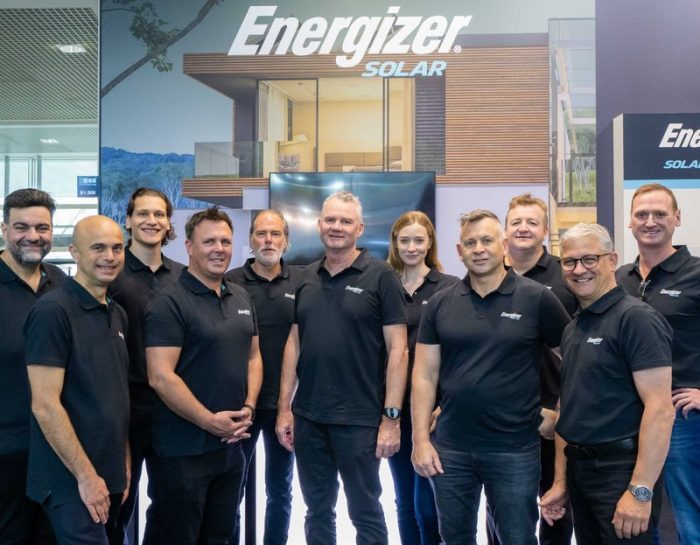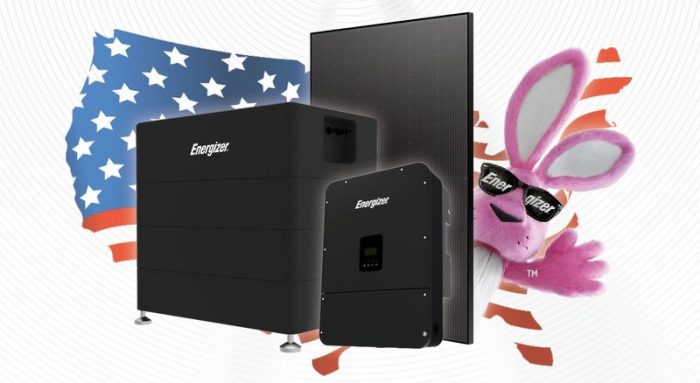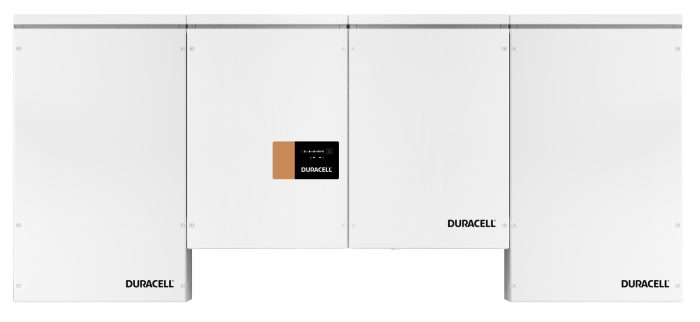
The market for home battery storage has finally crossed the line of attraction for large consumer battery makers, with offerings now available from Duracell and Energizer, and more likely to come.
“A huge part of the storage market is the brand,” says David Dunlap, the vice president of product strategy at BayWa r.e. Solar Systems.
Apart from the trust that these brands generate for potential adopters of a home battery system, these multibillion-dollar companies are seeking to provide all the elements of a winning market offering, from the single-source provision of the system, to service and warranty, to a robust and expandable smart device monitoring and control solution.
“The brand brings the history of producing consistent, reliable products that people can count on,” says Vince Jenkins, the director of North American sales for Duracell Home Center, in San Jose.
This type of brand trust has taken years to secure, points out Julian Sweeney, the managing director of 8 Star Energy, in Melbourne, the global licensee for Eveready and Energizer brands in solar and storage applications. “The generational awareness of the brand, and the joy and the trust that people have in the brand, goes back historically and through generations of people whom have been buying Energizer batteries,” he says.
Integrated Consumer Brand Systems

The Energizer Energy Vault ecosystem of solar panels, inverters and batteries will roll in the United States toward the end of the third quarter this year, says Sweeney. “There are still issues with some certifications, but we’ve had the experience of launching the product in Europe, Australia and New Zealand beforehand,” he notes. While the Energizer brand is being used in the United States, the Eveready brand is being used elsewhere due to regional brand recognition strength.
The Energy Vault will be offered in an expandable line ranging from 5.1 kWh to 20.4 kWh, depending on the solar array that will be utilized. 8 Star will not only target new installs, but also cater to retrofits of adding storage, and inverters — if upgrading is needed — to homes and businesses that already have PV installed. The Vault is based on LFP battery chemistry currently and has been configured for both AC and DC coupling, depending on the location and customer type.
While the Vault is not yet featuring a two-way charging capability for customers with EVs, the system is Virtual Power Plant-ready, thanks to the large market for VPPs that has emerged in Australia, says Sweeney. The system is also capable of other microgrid configurations, he adds.
With a similar strategy, fellow consumer battery giant Duracell is offering a solution that integrates solar microinverters, battery storage, and a Level 2 EV charger, along with a smart mobile app for monitoring and system financial planning.
“We’re taking the full suite of components into an ecosystem and delivering it to the market in 2023 at venues like Intersolar,” says Jenkins.

Duracell is taking pre-orders for its AC-coupled LFP battery system in several sizes, ranging from 5 kW/14 kWh to 10 kW/56 kWh. Unlike some proprietary integrated system providers, the Duracell solution is compatible with existing PV installations. Three microinverters range from 350 W peak with the D350-M1, to 1350 W peak with the D1500-M4. The full system has a 10-year warranty and the power electronics come with a 15-year warranty.
“Duracell sees tremendous opportunity to create effective green power management solutions for the home. Ultimately allowing the consumer to manage, store, and control all aspects of power within their home,” says Bobby Mendez, the president of Duracell North America, in a Home Center endorsement.
Monitoring and Control
Enact Systems’ software solution has been licensed by Duracell for its home battery system. Pleasanton, Calif.-based Enact offers monitoring and alerts, with setting controls for energy and financial outcomes. The software, which also offers installer analysis and marketing functions, is available to all U.S. solar installers and to those in some two dozen countries.
The monitoring system can also help explain the pros and cons of home storage to potential customers. “The complexity level of energy storage is probably anywhere from five to six times that of PV alone,” laments Jenkins. “There are no silver bullet solutions. The biggest part of an installer’s job is going to be the education of the customer, and that’s really where the software platforms come in, like Energy Toolbase.”
“Over the next three years, groups like NREL and private companies are definitely going to be rolling out some new (cost/benefit analysis) calculations because they do it very well right now for PV only, but not for PV with EVs, or for PV with storage,” Jenkins reckons. “Under NEM 3, California is going to be this amazing testbed for behind-the-meter storage including all these scenarios,” he adds.
Education
Installer education will be necessary before the installer can educate the potential customer, so Duracell is developing an interactive education and certification platform soon. “We will do more webinar-based education as we’re growing our dealer population,” Jenkins says.
Distributors of the Duracell Home Center, like BayWa r.e., also will benefit from the niche education program being developed for installers.
“The storage market is in a fickle spot right now, where installers who got burned at selling storage before they were ready, now may want to ramp up again, and they haven’t really picked their new preferred solution or partner,” says Dunlap. “At RE+ there were something like 40 or 50 storage solutions. We’re looking specifically at high-voltage storage solutions that are kind of plug and play for a grid-tied system. That’s about 80% of the market.”
Future Capabilities
More smart home features are on the way. Two-way EV charging functionality will be possible with the Home Center with a software update, Jenkins says. The Home Center meets the newest ISO 15118 standard for bi-directional smart charging and management, providing eligibility to participate in utility programs.
VPPs will also be an option for Home Center customers. VPPs are emerging as a way to leverage individual home storage systems as a group, interacting with wholesale electricity markets and utilities. While some integrated storage providers, like Tesla, have launched a proprietary model of VPP with thousands of customers in places like Southern California, the market is still catching up to the concept.
Linking an integrated solar + storage customer to a supplier-agnostic VPP may not be that difficult in the near future.
“We’ve already met the requirements for VPP certification with programs like Rocky Mountain Power’s Wattsmart Battery program. All our data sheets for energy storage will list these. We wanted to make sure we would meet the leading requirements to facilitate VPP formation,” says Jenkins.
Bottom Line for Storage Integration
“Anyone who can fully integrate a seamless platform for a communication and energy management hub is going to have something compelling. I think that’s what folks are chasing. That’s certainly what the Duracell model is all about, trying to create that integration,” suggests Dunlap.
Charles W. Thurston is a contributor to Solar Builder.
— Solar Builder magazine
Leave a Reply
You must be logged in to post a comment.